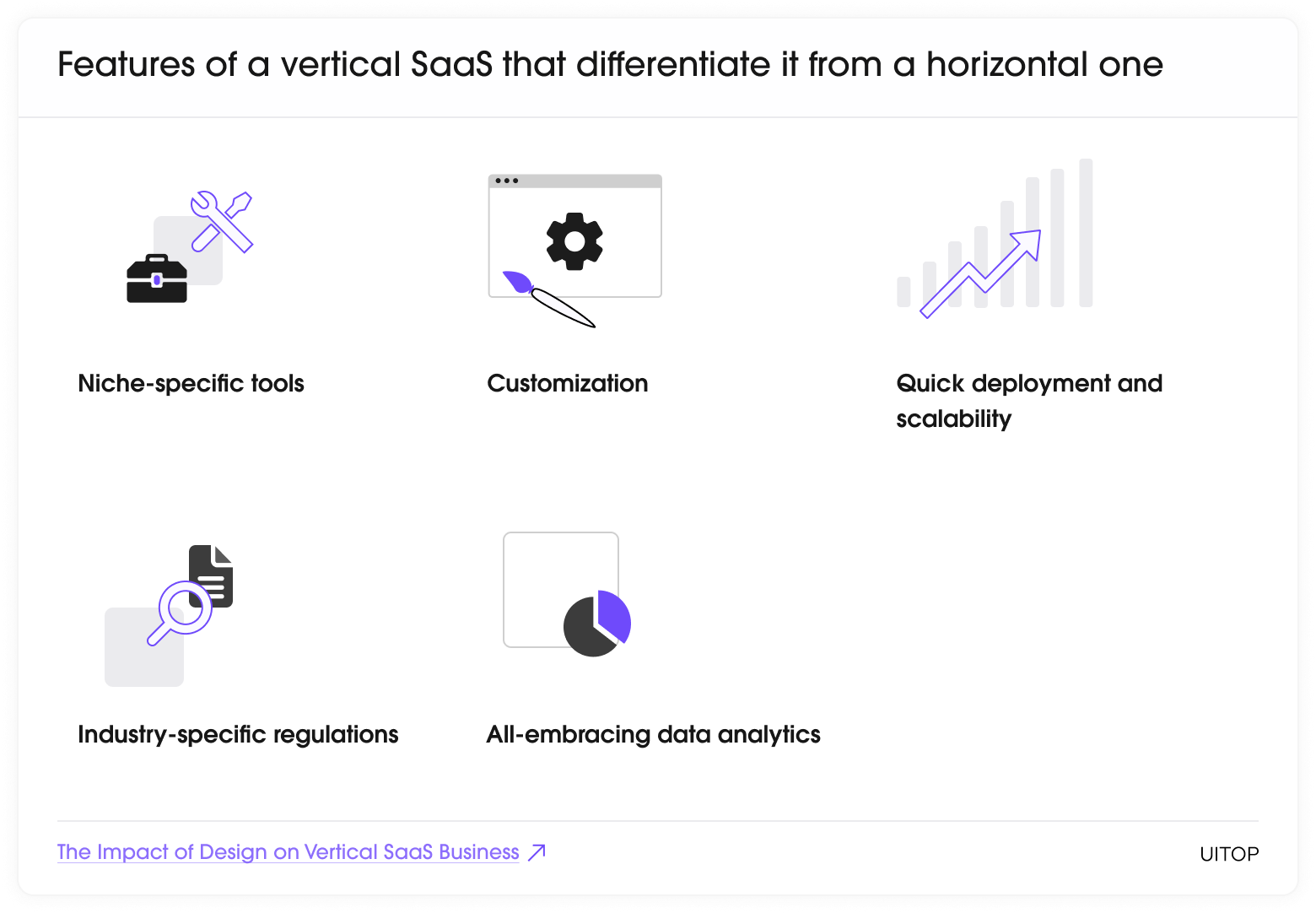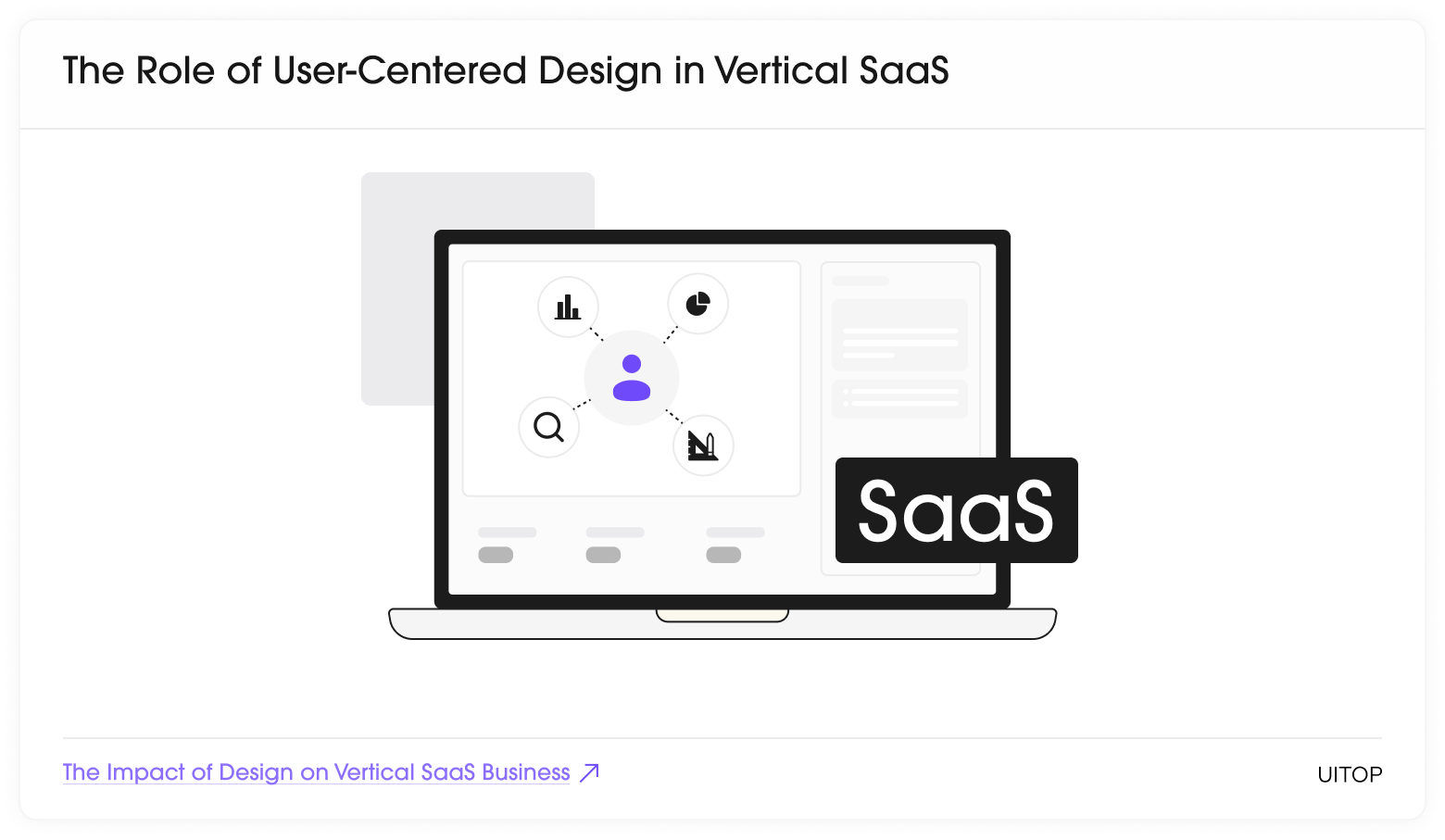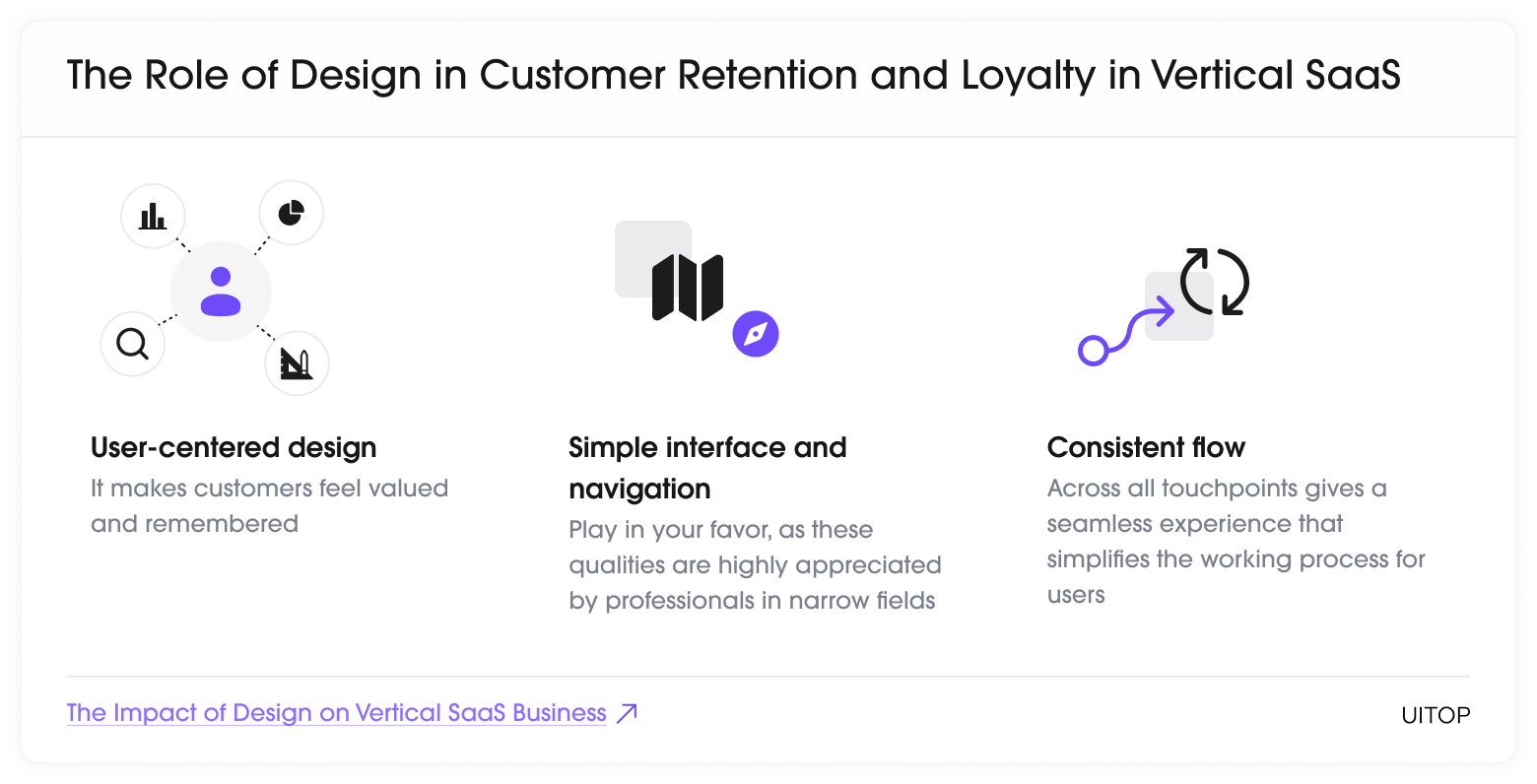What is SaaS?
If you're just beginning to research the idea of SaaS, this is the place to understand what SaaS can accomplish for you, how it works and differs, what are the main examples and what the future holds for SaaS development.
Software as a service (SaaS) business has been a revolutionary idea for the last two decades. The standard imagination of SaaS always refers to the horizontal type, which is suitable for broader audiences. However, the tendencies show that vertical SaaS businesses are on the rise.
Offering personalized solutions and adjusting services to the users’ needs is the main concept of a vertical SaaS. But such a level of custom-made offers is impossible without a thorough-thought design. Let’s learn how the vertical SaaS type depends on a good-quality design.
Vertical SaaS is a type of software as a service created for a specific niche. Its popularity has grown recently, specifically between 2020 and 2021. Organizations’ usage of vertical SaaS has increased by 18%. And that is not surprising, as companies tend to provide personalized experiences for their customers.
Vertical SaaS offers specific solutions for diverse industries. In retail, for example, business owners struggle to tailor services to their audiences’ needs. In healthcare, compliance with regulations is crucial, which is why software solutions specifically designed to meet those requirements are in demand.
The main concept of vertical software as a service is that it is not positioned for general use. This cloud-based software has specific features that satisfy a certain niche. It is an in-depth and one-industry-oriented instrument that can be used by people who already have knowledge in the field for which it is designed.

To understand its mission, let’s take an example of a customer relationship management (CRM) system. Even though its main purpose is to store and process clients’ details for different industries, its functions will vary. A vertical SaaS-type CRM for real estate will focus on deal management instruments, lead attraction, client information storage, and other similar tasks. In banking, such software will be responsible for reports and analytics, lead tracking, contact management, and data security.
Here are some more features of a vertical SaaS that differentiate it from a horizontal one:
The concept of user-centered design (UCD) aligns with the main idea of a vertical SaaS. Both put users’ needs at the center and focus on them throughout the product’s development. So it goes without saying that every vertical cloud-based software should have a customer-oriented design.

The role of a UCD for a vertical SaaS company is pivotal. You can develop multiple niche-specific advanced tools, but if you put them in the wrong place in the application, users can miss or poorly use them. If you make the principal instruments not highlighted with color, your software will cause usability issues. That is why the design part is so important.
Since vertical SaaS products possess specific features, teaching customers how to operate them is essential. The statistics show that 86% of users claim they would be more loyal to a company if there were onboarding tutorials instead of greeting messages after the purchase. This emphasizes the importance of well-built onboarding content, especially for narrowly focused vertical software.
A clear onboarding process directly reflects on the adoption rate. This is the first route customers will see when opening software, so it has to make a good first impression. Surely, here, you can’t do without design. An intuitive interface and easy navigation can help build an easy-to-understand onboarding experience.
Competition between vertical SaaS companies remains high. Customers tend to stay with services that are easy to operate. Thus, properly designed software boosts users’ satisfaction and makes them choose a particular company.

Here is how the design can influence customer satisfaction and decision-making about staying with you:
Thus, when using your vertical SaaS simplifies users’ lives, they will be sure to be loyal to you.
The target audience of a vertical SaaS is professionals in a certain field. To be more productive and proactive at performing their tasks, they need a service that allows them to stay so. Intuitive design, visual aesthetics, consistency, well-planned workflows, and accessibility are what can increase users’ efficiency.
Imagine working with financial operations and being unable to understand anything in the analytics, as it is messy. This aspect is crucial for the banking sphere and, if designed well, can help users easily cope with the assignments.
Vertical cloud-enabled software continues to develop and holds many plans for the future. While their functionality will undergo new changes and be replenished with new features, design remains the key element that can enforce innovations. Whether you will be offering more integrations or specifically designed new features, the aspects of simplicity, minimalism, and usability will help you implement the changes so that users receive a seamless experience.
Let’s look at examples of vertical SaaS services that have built their solid authority thanks to their design.
This vertical SaaS company specializes in the insurance industry. With its robust functionality, the users of Applied Epic highlight its easy-to-navigate dashboard and intuitive design. The automated workflows allow businesses to operate with properties, sales, and revenues in several clicks.
The Canny customer feedback management platform simplifies retrieving feedback from multiple sources. Its clean, feature-filled design defines how the company should manage customer feedback.
Managing sports events by sports clubs becomes extremely easy with Thapos. This vertical SaaS design aligns with the vibe of youth sports. A clear and intuitive interface, mobile optimization, and role-based access give this service a great advantage in the market.
Vertical software as a service creates specific solutions for specific niches. Since its main task is to create a personalized experience, its design plays a key role. A high-quality visual picture and seamless navigation come with many benefits. Among them, there is increased customer satisfaction and loyalty, improved user productivity and efficiency, and a better ground for implementing innovative ideas. The design goes hand in hand with vertical SaaS functionality and empowers it by providing unique solutions.

A vertical SaaS is a type of software that is created for a specific niche. It has unique features that can be used by professionals in a certain field. This type of SaaS offers personalized solutions and customization.
Since the main concept of vertical cloud-based software is to serve customers from a specific field, a high level of customization can only be achieved through the design. Putting customers’ needs at the center and building the workflows around them is a strategy many successful vertical SaaS companies follow.
A properly designed onboarding route helps to encourage customers. Since vertical SaaS offers advanced features, providing tutorials is crucial for your clients to cope with the functionality faster.
Definitely! The more features you implement, the better your design should be, as it reflects your growth and innovations. Scaling and improving come with the understanding that your product should be equally user-friendly, and the design is an integral part of this definition.
If you're just beginning to research the idea of SaaS, this is the place to understand what SaaS can accomplish for you, how it works and differs, what are the main examples and what the future holds for SaaS development.
The advent of software-as-a-service (SaaS) solutions has ushered in a new era in technology and business. Gone are the days of complicated installations, high licensing fees, and all the headaches that come with them. SaaS represents a paradigm shift away from traditional, time-consuming, and costly methods of software delivery to a more flexible, cost-effective, and […]
A successful user journey is one that ends with a purchase. That is why marketers dedicate a lot of resources to getting them through all the steps. However, the whole effort can be in vain if the software-as-a-service (SaaS) pricing page design is built incorrectly. And some of the companies, namely 60% of the research […]
“They took extra time to ensure that our frontend developer could easily implement the wireframes.”


Our processes with your needs in mind drives any SaaS product growth. Let’s see how our approach aligns with your vision.
Let’s discuss your design challenges
Please leave your email so we can contact you

Tell us a little more about your product so we can estimate it
We'll help you make the right choice!
Leave your email to receive regular updates to your inbox